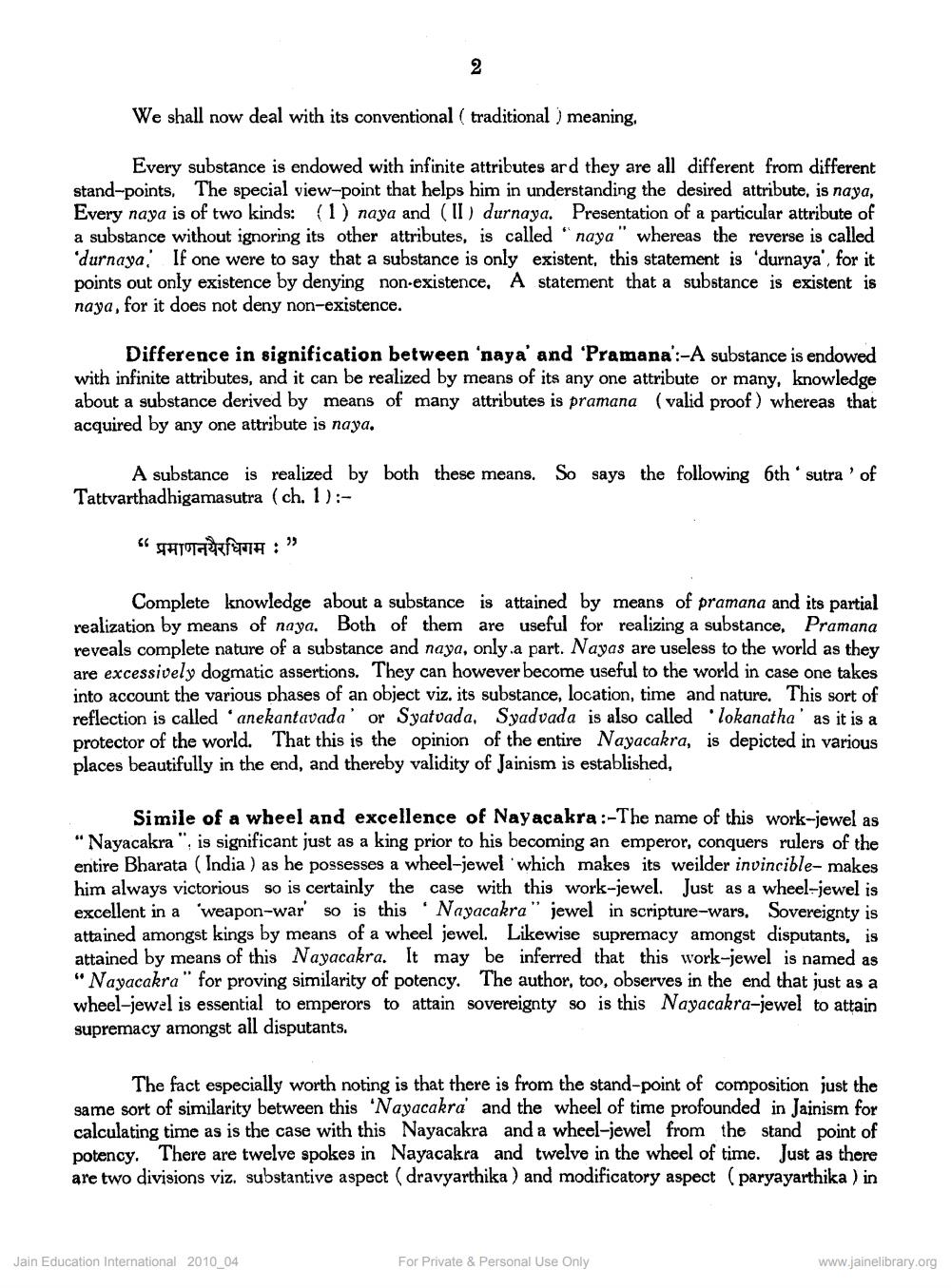________________
We shall now deal with its conventional (traditional ) meaning,
Every substance is endowed with infinite attributes ard they are all different from different stand-points. The special view-point that helps him in understanding the desired attribute, is naya, Every naya is of two kinds: (1) naya and (II) durnaya. Presentation of a particular attribute of a substance without ignoring its other attributes, is called “naya" whereas the reverse is called durnaya If one were to say that a substance is only existent, this statement is durnaya', for it points out only existence by denying non-existence, A statement that a substance is existent is naya, for it does not deny non-existence.
Difference in signification between 'naya' and 'Pramana:-A substance is endowed with infinite attributes, and it can be realized by means of its any one attribute or many, knowledge about a substance derived by means of many attributes is pramana (valid proof) whereas that acquired by any one attribute is naya,
sutra
of
A substance is realized by both these means. So says the following 6th Tattvarthadhigamasutra (ch. 1):
“ HITTA :"
Complete knowledge about a substance is attained by means of pramana and its partial realization by means of naya. Both of them are useful for realizing a substance, Pramana reveals complete nature of a substance and naya, only.a part. Nayas are useless to the world as they are excessively dogmatic assertions. They can however become useful to the world in case one takes into account the various phases of an object viz. its substance, location, time and nature. This sort of reflection is called 'anekantavada' or Syatvada. Syadvada is also called 'lokanatha' as it is a protector of the world. That this is the opinion of the entire Nayacakra, is depicted in various places beautifully in the end, and thereby validity of Jainism is established,
Simile of a wheel and excellence of Nayacakra :-The name of this work-jewel as "Nayacakra", is significant just as a king prior to his becoming an emperor, conquers rulers of the entire Bharata (India ) as he possesses a wheel-jewel which makes its weilder invincible- makes him always victorious so is certainly the case with this work-jewel. Just as a wheel-jewel is excellent in a 'weapon-war so is this 'Nayacakra" jewel in scripture-wars, Sovereignty is attained amongst kings by means of a wheel jewel. Likewise supremacy amongst disputants, is attained by means of this Nayacakra. It may be inferred that this work-jewel is named as "Nayacakra" for proving similarity of potency. The author, too, observes in the end that just as a wheel-jewel is essential to emperors to attain sovereignty so is this Nayacakra-jewel to attain supremacy amongst all disputants.
The fact especially worth noting is that there is from the stand-point of composition just the same sort of similarity between this 'Nayacakra' and the wheel of time profounded in Jainism for calculating time as is the case with this Nayacakra and a wheel-jewel from the stand point of potency. There are twelve spokes in Nayacakra and twelve in the wheel of time. Just as there are two divisions viz. substantive aspect ( dravyarthika ) and modificatory aspect (paryayarthika ) in
Jain Education International 2010_04
For Private & Personal Use Only
www.jainelibrary.org




